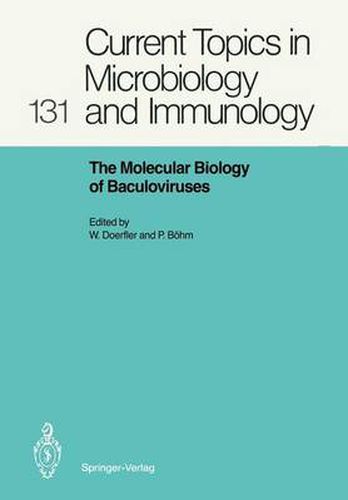Readings Newsletter
Become a Readings Member to make your shopping experience even easier.
Sign in or sign up for free!
You’re not far away from qualifying for FREE standard shipping within Australia
You’ve qualified for FREE standard shipping within Australia
The cart is loading…






This title is printed to order. This book may have been self-published. If so, we cannot guarantee the quality of the content. In the main most books will have gone through the editing process however some may not. We therefore suggest that you be aware of this before ordering this book. If in doubt check either the author or publisher’s details as we are unable to accept any returns unless they are faulty. Please contact us if you have any questions.
The pathology caused by baculoviruses in insect popula- tions was described centuries ago, notably in the larvae of insects such as the silkworm (Bombyx mori) which has been appreciated for the quality and beauty of its products. In the 1940s baculoviruses and their structure and physiolo- gy were intensively investigated, particularly by Bergold’s group in Tiibingen. The following decades saw excellent progress, laying a solid virological base for later investiga- tions on the system. Further studies mushroomed in the 1970s with the advent of tissue culture systems for insect cells which eventually facilitated the molecular biological approach that came to the fore in the 1980 s. One of the reasons for pursuing research on the baculo- virus system was the prospect of eventually using these vi- ruses as insect pest control agents. While this practical as- pect may appeal to many, molecular biologists had addi- tional reasons to be interested in baculoviruses. Here was a large DNA viral genome, probably fraught with problems of replication and regulation that hopefully would open inroads into the molecular biology of interesting insect cell systems. In the days when genetechnology promises laurels, and after several virus systems had been skilfully exploited as highly efficient eukaryotic expression vectors, it came as no surprise that baculoviruses were also investigated in that respect. Indeed, the Autographa californica nuclear po- lyhedrosis virus became a good vector. Insect cells also seem to collaborate in modifying and processing the gene- technologically synthesized polypeptides.
$9.00 standard shipping within Australia
FREE standard shipping within Australia for orders over $100.00
Express & International shipping calculated at checkout
This title is printed to order. This book may have been self-published. If so, we cannot guarantee the quality of the content. In the main most books will have gone through the editing process however some may not. We therefore suggest that you be aware of this before ordering this book. If in doubt check either the author or publisher’s details as we are unable to accept any returns unless they are faulty. Please contact us if you have any questions.
The pathology caused by baculoviruses in insect popula- tions was described centuries ago, notably in the larvae of insects such as the silkworm (Bombyx mori) which has been appreciated for the quality and beauty of its products. In the 1940s baculoviruses and their structure and physiolo- gy were intensively investigated, particularly by Bergold’s group in Tiibingen. The following decades saw excellent progress, laying a solid virological base for later investiga- tions on the system. Further studies mushroomed in the 1970s with the advent of tissue culture systems for insect cells which eventually facilitated the molecular biological approach that came to the fore in the 1980 s. One of the reasons for pursuing research on the baculo- virus system was the prospect of eventually using these vi- ruses as insect pest control agents. While this practical as- pect may appeal to many, molecular biologists had addi- tional reasons to be interested in baculoviruses. Here was a large DNA viral genome, probably fraught with problems of replication and regulation that hopefully would open inroads into the molecular biology of interesting insect cell systems. In the days when genetechnology promises laurels, and after several virus systems had been skilfully exploited as highly efficient eukaryotic expression vectors, it came as no surprise that baculoviruses were also investigated in that respect. Indeed, the Autographa californica nuclear po- lyhedrosis virus became a good vector. Insect cells also seem to collaborate in modifying and processing the gene- technologically synthesized polypeptides.